Kidding around at Goatman’s Bridge in Denton, Texas
Half-goat, half-man, all creepy.
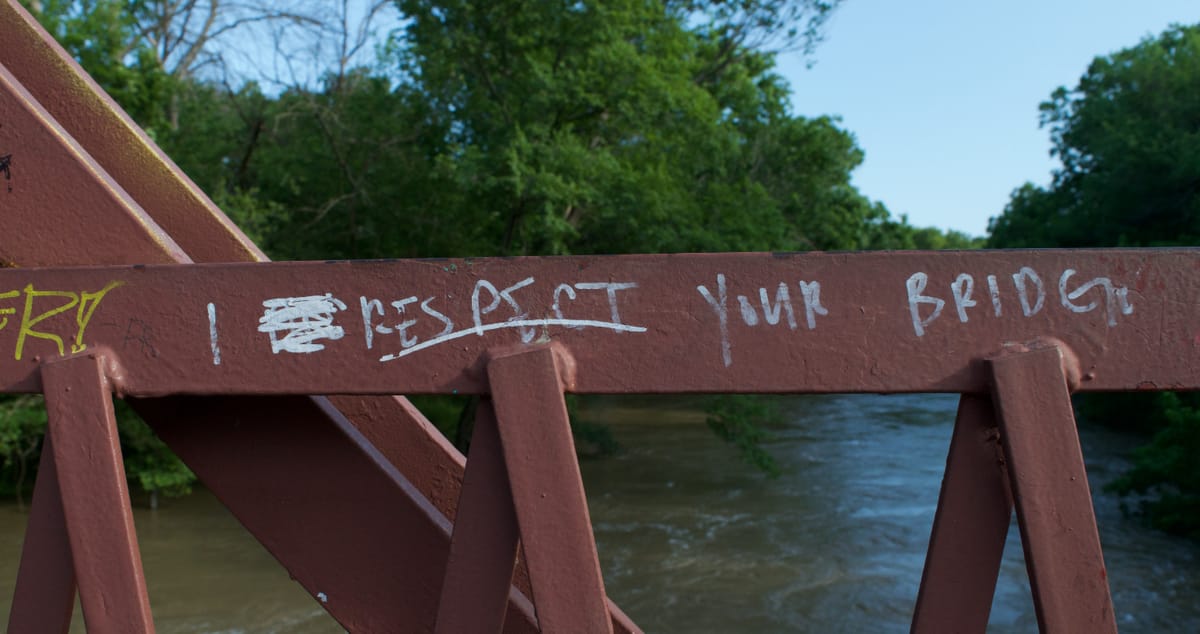
I’ve been sleeping well lately. So I decided it was time to investigate another North Texas oddity. This time I checked out Goatman’s Bridge in Denton, Texas.
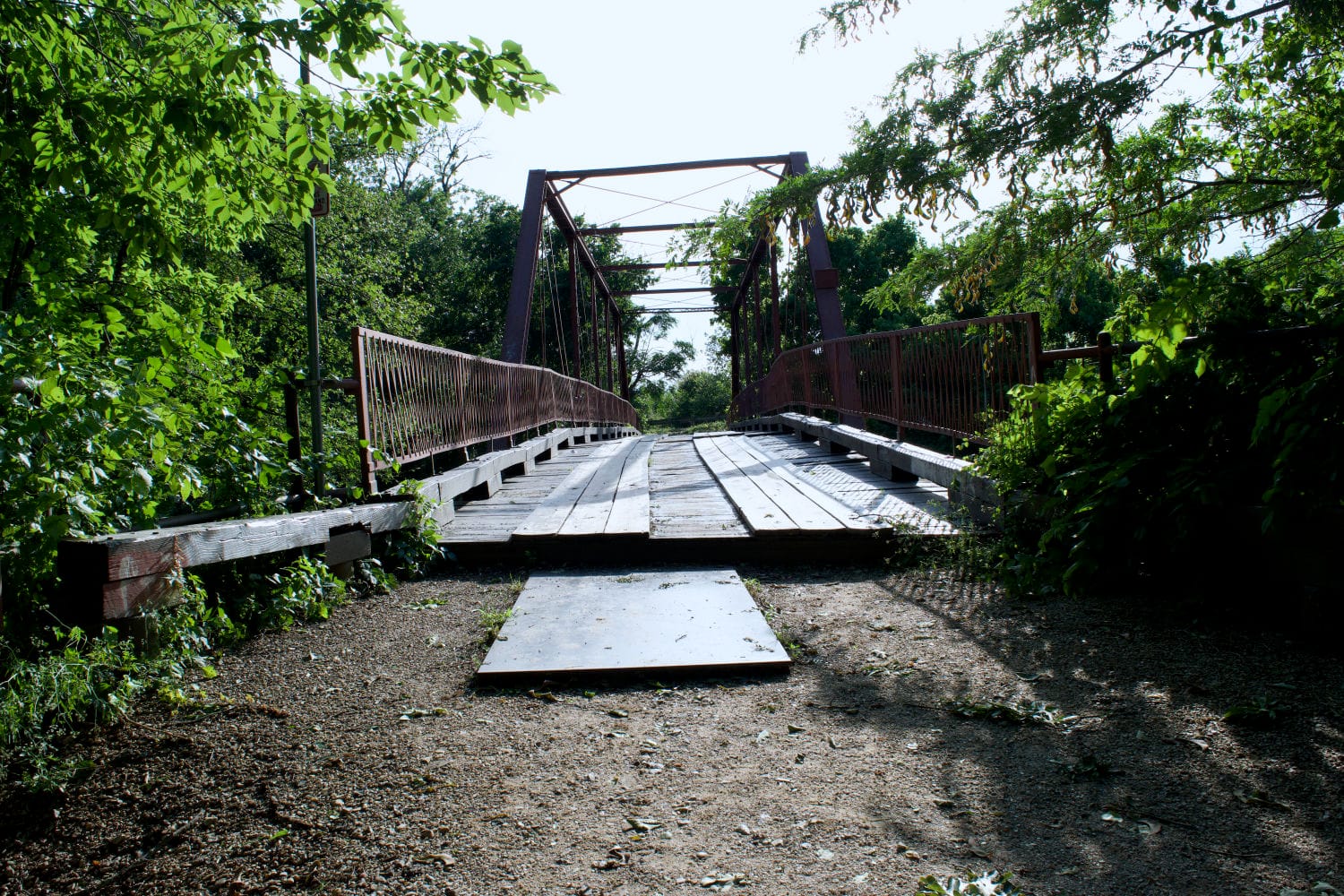
I’ve actually visited the bridge twice. I lost my pictures after the first visit and revisited a few days later with my son to get another round. We went the day after a crazy storm blew into the area and brought baseball-size hail and strong winds. So there were a lot of fallen limbs in the area.
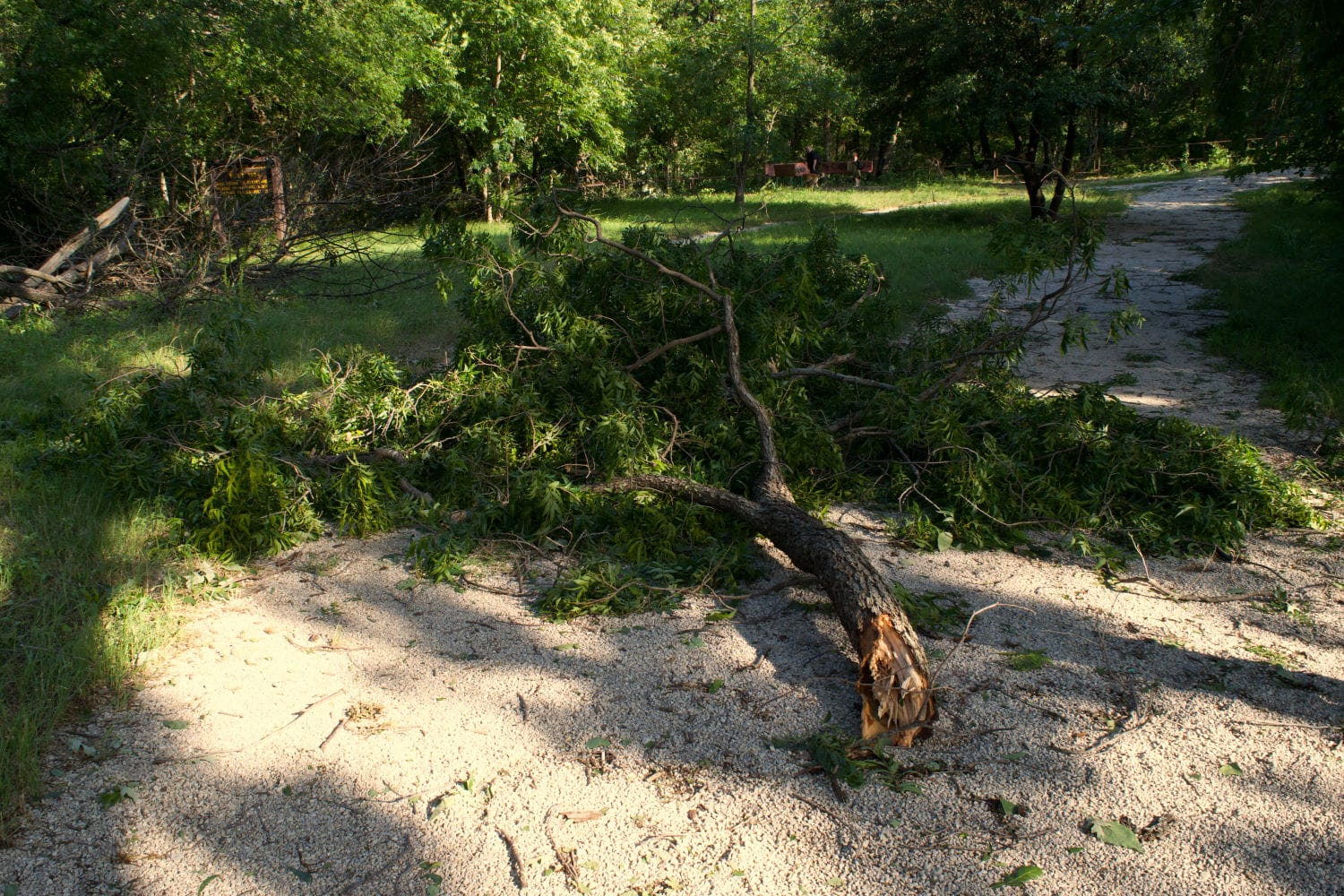
Or maybe they were the destruction left behind after the Goatman’s latest rampage.
There are certain ghost stories that people seem to repeat every chance they get. Every lake has the ghost of the mother searching for her drowned child. Every small town with a railroad track has that strange light no one can explain. Even the Goatman pops up time and time again.
According to Eric J. Kuhns:
There are many states with this same creature haunting certain areas or entire countrysides such as the legendary ax-wielding half-goat half-man creature of Maryland. The U.S. state of Kentucky has their own demonic Goatman stories. As the goat head has been popularized in satanic worship and symbolism, it’s no wonder that the superstitious would conjure this image in their minds.
The Goatman of Denton, Texas, has a few different origin stories. But in all of them, he is a half-man, half-goat giant standing more than seven feet tall (maybe even eight feet tall). Legend has it he terrorizes the area around the bridge. Some stories say he’s the monstrous product of a lynching. Others claim he’s a servant of the devil.
Note: All pictures in this post are my own. But the content was written with the help of the posts referenced at the end. Properly citing these references in the post itself would be a pain, but I want to be sure to give credit where it’s due.
The Old Alton Bridge
Let’s cover some facts before we start digging into the lore of Goatman’s Bridge.
The bridge’s proper name is Old Alton Bridge.
As you can see in the picture of the sign below, Old Alton Bridge was built in 1884 and placed on the National Register of Historic Places just over a century later in 1988.
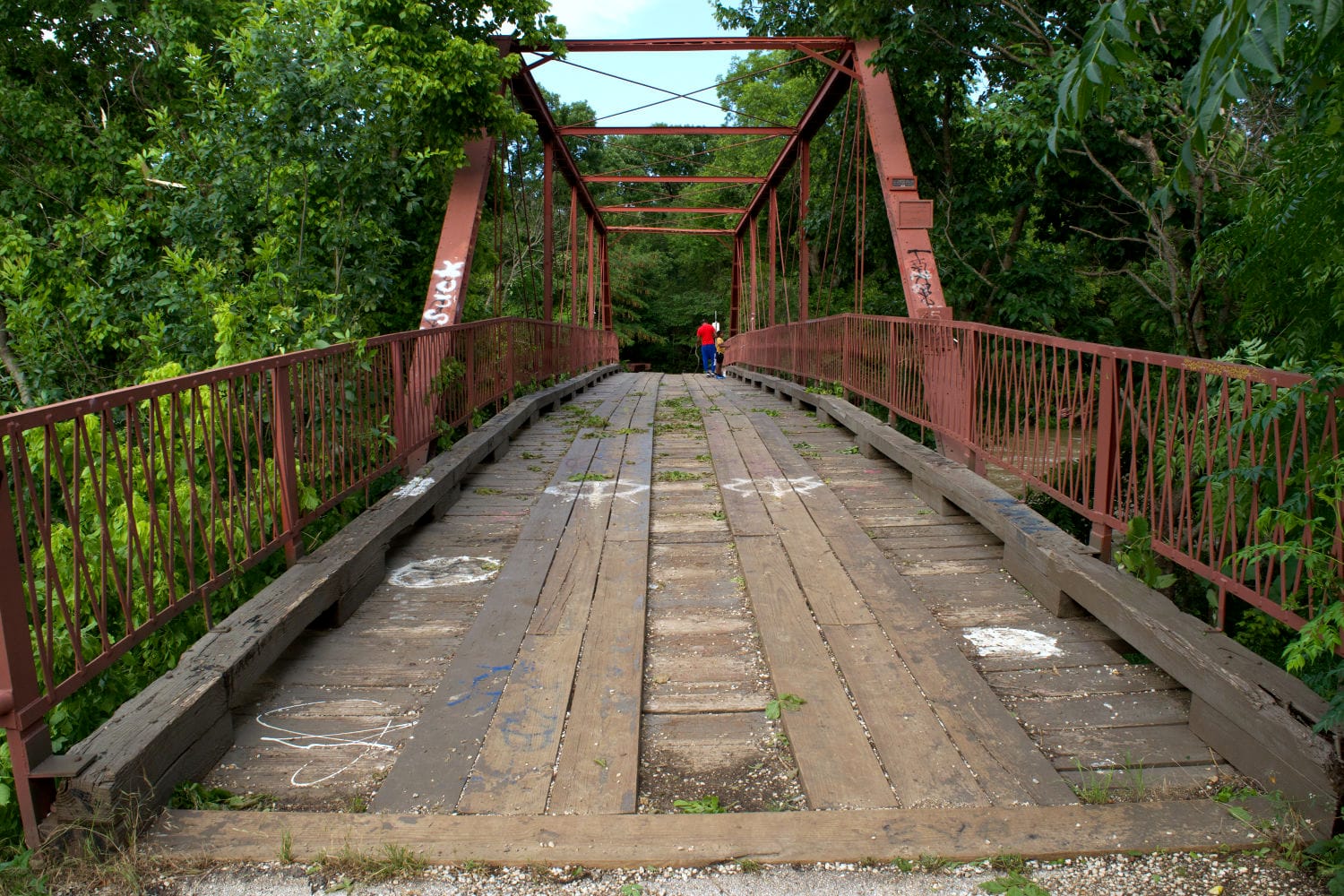
The bridge was built to accommodate horses but was used for vehicle traffic for a while. The bridge became obsolete when a modern bridge crossing Old Alton Road over Hickory Creek was built.

But the bridge’s story would be boring if it stopped there.
The story of Goatman’s Bridge
Most ghost stories and urban legends I’ve checked out appear to have one agreed-upon narrative. But Goatman’s Bridge is unique in that it bounces between two extremes: one in which the Goatman is a victim of lynching, and one in which he’s a sign of devilish activities.
Let’s take a look at the Goatman’s origin stories.
Oscar Washburn
The most popular of Goatman’s origin stories says that he was first Oscar Washburn, a successful Black goat farmer who angered nearby Whites when he posted near the bridge a sign pointing potential customers in his farm’s direction. ‘This way to the Goatman,’ the sign supposedly said. Back in the 1930s, this was apparently enough to justify a lynching.
So members of the Ku Klux Klan crossed the Old Alton Bridge in the cover of night and dragged Washburn from his home to the bridge, where they hung him and threw him over the side. But when the Klansmen looked over the bridge, Washburn was nowhere to be found.
Some versions of the story say that the Klansmen panicked and then burned down Washburn’s home, killing his wife and children. The Klansmen fled. But they had already created a monster as Washburn somehow merged with at least one of his goats.
If anyone with Klansmen’s blood in their veins summons or taunts the Goatman, they’ll soon wish they’d just stayed home watching reruns of Bonanza.
When I visited the bridge, I saw numerous locks attached to the bridge.

I imagine these locks are a reference to Washburn’s lynching, though I may be wrong. (And if you know what the locks represent, please let me know!)
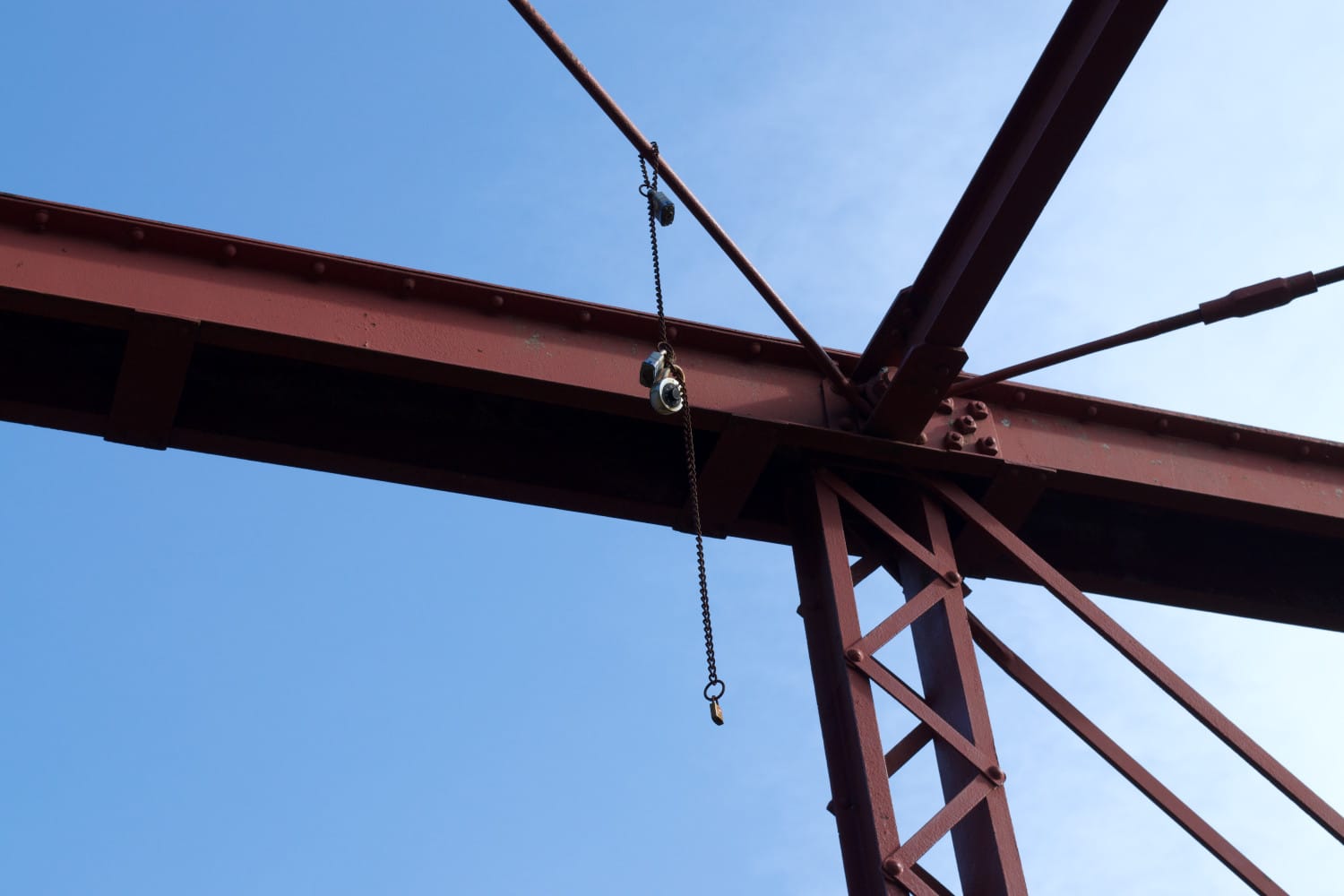
There is no record of an Oscar Washburn in Denton County, so all details of this story appear false. But there’s almost always a deeper truth in a completely fictitious story. America has quite the shameful history with racism and lynchings. And Texas has its own fair share of guilt in these areas.
While the Oscar Washburn story is most likely completely made up, the story has served as a vehicle for talking about parts of the past many of us would rather forget.
The demonic Goatman’s Bridge
One version of the tale says that Goatman’s Bridge is a portal to Hell.
I haven’t found many details about why this bridge became such a portal. And I can’t find any links to the Goatman other than the fact that goats are often considered symbols of Satanic rituals. Also in keeping with Satanic lore, you can summon the demon Goatman by knocking on the bridge three times.
It should come as no surprise that you can find pentagrams spray-painted on the bridge.

Supposedly things gets really crazy on the bridge if you cross it at 3am.
Jack Kendall
The lesser-known Jack Kendall story is similar to the Oscar Washburn story.
One minor difference is that Kendall was Creole. When he was hung over the side of the bridge, his head popped off, but the power of Voodoo reanimated his body, which walked over to a nearby goat, ripped off the head of the goat, and claimed the goat’s head for his own.
Like Washburn, there is no record of a Jack Kendall in Denton County. Perhaps Kendall’s story could serve as a reminder of the history of race in Texas, if not for Washburn’s story.
The grieving mother
One version of the story—or perhaps a side story—says there’s a woman who haunts the creek as well.
In one version, the woman is Oscar Washburn’s wife, grieving for their murdered children. In another version, the woman is the mother of a child who was taken by the Goatman.
I’m not sure why the Goatman took this child. Was the child the offspring of a Klansman? Is the mother White? Black? Only now do I realize these details don’t appear to have popped up in my reading on the tale.
Beyond Goatman’s Bridge
Goatman’s Bridge likely wouldn’t be so eerie if it were in a wide-open area. But it’s near some woods, which add to the mystery.
My son and I started exploring the surrounding woods but didn’t go too far due to mud courtesy of the previous night’s storm.
If you believe in the Goatman, I think you have to ask where he hides out during the majority of the time, when he’s not haunting. This swamp looks like a good home for a half man, half-goat creature.
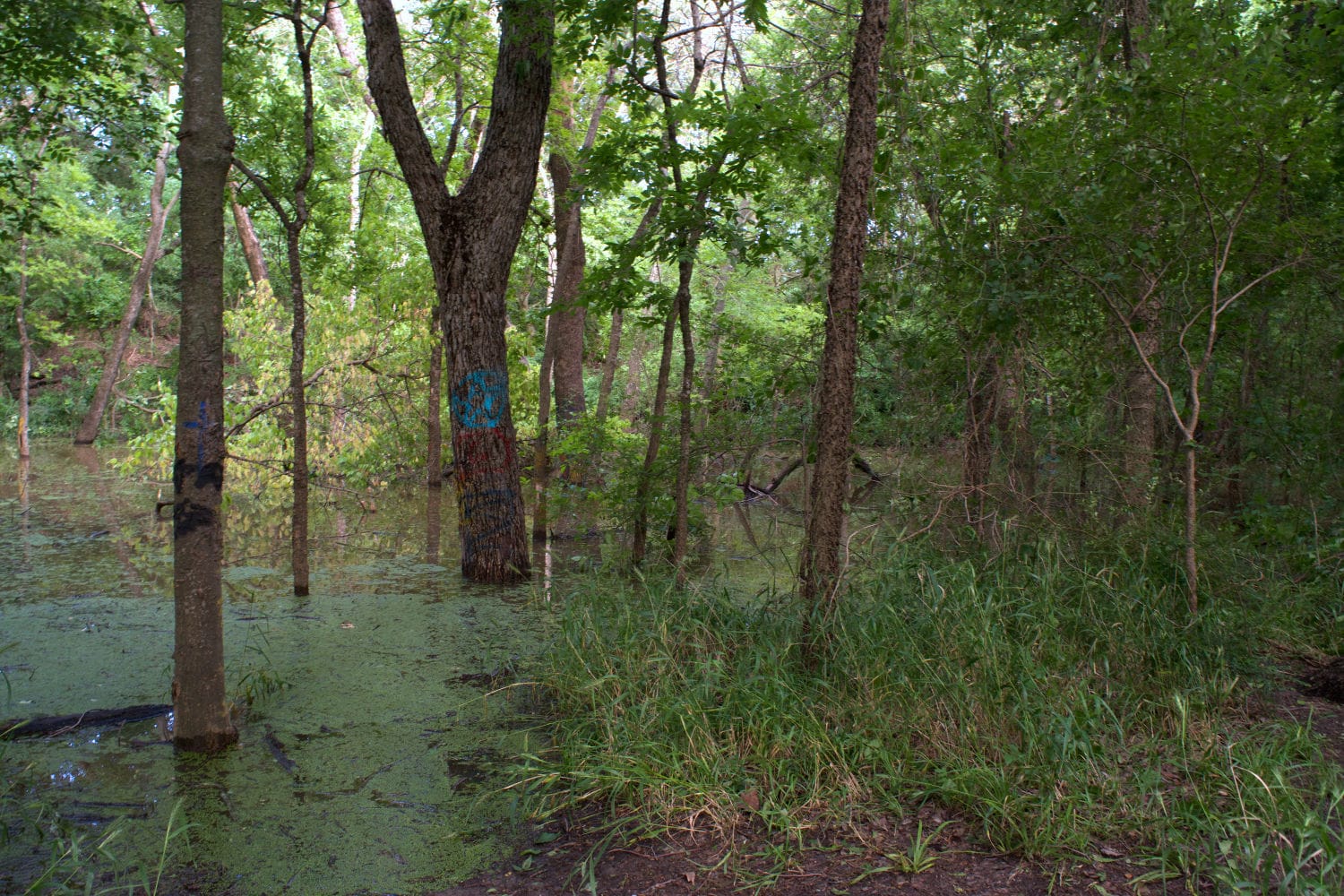
Learn more about Goatman’s Bridge
To learn more about Goatman’s Bridge, watch this video from Buzzfeed’s Unsolved series and read the articles below.